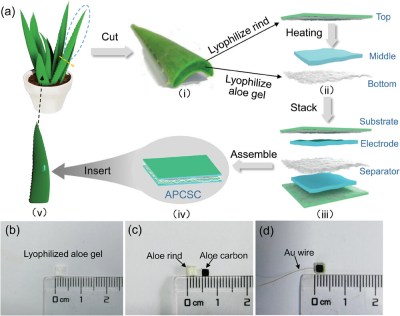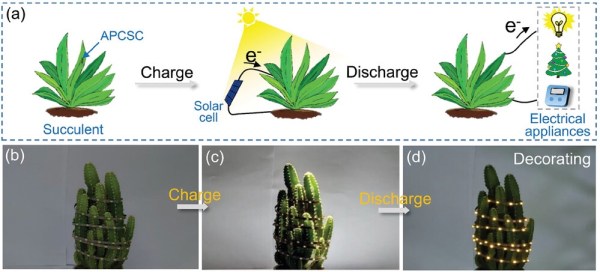Researchers in Beijing have discovered a way to turn succulents into supercapacitors to help store energy. While previous research has found ways to store energy in plants, it often required implants or other modifications to the plant itself to function. These foreign components might be rejected by the plant or hamper its natural functions leading to its premature death. 
This new method takes an aloe leaf, freeze dries it, heats it up, then uses the resulting components as an implant back into the aloe plant. Since it’s all aloe all the time, the plant stays happy (or at least alive) and becomes an electrolytic supercapacitor.
Using the natural electrolytes of the aloe juice, the supercapacitor can then be charged and discharged as needed. The researchers tested the concept by solar charging the capacitor and then using that to run LED lights.
This certainly proposes some interesting applications, although we think your HOA might not be a fan. We also wonder if there might be a way to use the photosynthetic process more directly to charge the plant? Maybe this could recharge a tiny robot that lands on the plants?













